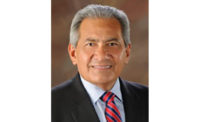In 2019, the U.S. is more health conscious than ever. Fitbit and other wearables track personal health metrics. Whole Foods has 500 stores. Organic restaurants deliver local farm food. Beds and pillows promise better sleep. Five a.m. yoga classes are the norm. Pharmaceutical ads for depression, anxiety, insomnia and other mental health disorders plaster the evening news shows. Billboards and public service announcements encourage parents to stop giving children sugary snacks. Oregon just passed a law allowing students to take “mental health days.” Headlines such as, “Latest Suicide Data Show the Depth of U.S. Mental Health Crisis” are common. Ninety-two percent of U.S. residents say it’s important to get an annual physical, according to the Kaiser Family Foundation, and 62 percent report actually getting the exam. It’s estimated about 44 million Americans get physicals ever year.
A counter trend
In the midst of this high health awareness, NIOSH in June reported that “many workers with access to workplace health promotion programs have never participated in any of them.” About 47 percent of U.S. workers have access to health program programs; among those with access only 58 percent participate. That’s roughly one in every four workers.
Utilization rates for employee assistance programs (EAPs) are also low — less than seven percent according to one study — despite estimates that more than 97 percent of large companies in the U.S. (5,000+ employees) offer EAPs, and 75-80 percent of medium- and small-size companies make EAP services available.
So what’s wrong with wellness, and what can employers do about it?
Obstacles to engagement
Fear: Employees live in the age of leaks and many don’t trust company-sponsored EAPs for phone consultations on mental health, says Melissa Gill, who has been working as an on-site medical provider to companies for 12 years. Depression, anxiety, panic attacks and stress still carry strong stigmas that can in some cases put career advancement and job security at risk.
“All the ADA or HIPPA in the world won’t keep an employer from not hiring – or firing – an employee with a personal health matter that the organization deems inhibits their productivity,” says a safety manager who has health considerations requiring medications, appointments and absences that he feels has made him something of a target.
There are other fears at play. Wellness and EAPs focus on personal behaviors – lifestyle choices – and sensitive private issues such as marriage, family and relationships; health; legal and financial concerns; substance abuse; grief counseling; and personal crises. Employees can have a hard time opening up about these matters even to close family, friends and experts outside of work. Using work-related communication channels and support services, even with promises of confidentiality, is unchartered territory that many employees don’t want to traverse.
“A quick frown, snide comment about an employee in another department using the services, or direct demands to always place work first can undermine” wellness initiatives, says Kurt Krueger, a consultant with ORCHSE Strategies.
Lack of trust: Fear is bred by a lack of trust. In the age of unpredictable corporate behavior and decisions – layoffs, plant closings, benefit rollbacks – “trust is a major issue,” says Dr. John Kello, an organizational management consultant. “In low-trust environments, voluntary participation will be low.”
Fatigue: “A lot of people don’t use wellness programs because they are literally being worked to death,” says safety consultant Phil LaDuke. “Mental and physical fatigue leads to exhaustion and feelings of hopelessness. It’s just easier to have a couple of beers than to spend your limited free time with an EAP when you get home.”
Cynicism: Too many wellness programs are poorly planned and organized and do not involve professional coaches or counselors. Employees can sniff out safety programs, incentive programs, and wellness initiatives that lack leadership investment in time, money and personal commitment. Been there, done that is the attitude. Another superficial flavor-of-the-month roll-out.
Privacy: “Many employees want to do something about health or personal crises but they don’t want their employers to track it. We have enough intrusion into our time,” says Mark Hansen, a risk management consultant with Contek Solutions, LLC. “I think people are of the mindset, ‘enough is enough,’ and ‘what happens after work is my business’.”
Procrastination: “People don’t reach out for help typically until it’s too late,” says Hansen. “They are in denial until they get a heart attack, high blood pressure, diabetes and such. They don’t think ‘it can happen to me’.”
The challenge of change: Ask most anyone who’s tried to keep a New Year’s resolution even into the summer. Health behaviors are notoriously hard to change. Losing weight, eating better, exercising more, drinking less, smoking cessation and overcoming substance abuse are terribly difficult to sustain. Health and other personal behaviors are embedded in everyday lives, routines and habits. They are part of one’s personal identity. And many people find drinking, eating, being lazy and sitting in the sun too long enjoyable; they like it; it’s fun. Behaviors that persist tend to be functional for people.
“Safety pros have been trying to figure out the sheer difficulty of changing human behavior since the beginning of safety,” says Hansen. “I’ve found it generally true that ‘you can’t teach an old dog new tricks’ and I’ve heard the opinion, ‘Hey, not everyone wants to live to 100 so who cares.’”
Change motivated by negatives – guilt, fear, shame, regret – tends not be as successful as change motivated by prospects of positive personal gain.
Change is not linear. Many people relapse and must recycle through one or more of the five stages of change: precontemplation (avoidance then gradual awareness); contemplation (ambivalence and weighing the pros and cons of change); preparation (acknowledging the need to change; making a plan; taking the first steps); action (you’ve made the change – stopped smoking – and practice alternatives and healthy coping strategies); and maintenance (after about six months of a new behavior you avoid unhealthy situations and triggers, such as steering clear of certain activities or friends).
Overcoming obstacles
Experts are up front in their assessment that it takes hard work to have a successful wellness program. Here are five keys:
1) Leadership
As with safety programs, senior leadership involvement, belief, and support are paramount. “It takes a conscious effort by company leaders to drive change,” says Krueger. “They must personally value healthy employees and lifestyles. They must see wellness as a good business practice that saves healthcare costs, improves productivity and morale, and backs up the heavy investment in finding, hiring and training their people. And leaders must understand the power of what they say or don’t say, and how they say it, affects the behavior of their people.”
2) ROI
General Mills Corporation is one company that buys into numerous studies showing a 3 to 1 return on investment on employee wellness programs. According to the Employee Assistance Society of North America, investment in an EAP will return at least a savings of $3 per $1 invested in services.
3) Organization
A culture of well-being is no different from a culture of safety. Experts say every successful wellness program has a wellness committee composed of “wellness champions” from a cross-section of departments, work units and shifts, and levels of responsibility. This gives employees a sense of input and ownership, and increases participation rates. It also avoids wellness coming off as a “top down” edict, or worse, a fad. Committee members drive the wellness program from the bottom up with peer-to-peer and one-to-one promotion.
Experts advise including spouses, significant others, children and even friends in wellness activities including fitness centers or gym memberships; nutrition, weight loss and stress management classes; health screenings; and regular biking, running, swimming or hiking outings. Social support is key to successful behavior change.
Wellness programs should not be a series of one-off events, presentations, screenings and incentive programs. These are easy to administer and require no data collection or tracking. All wellness programs should be fun, but the goal is to improve employee health and reduce healthcare costs. This requires monitoring and good data to assess the impact of activities and evaluate the overall effect of the program.
Don’t try to affect too much behavioral change at once. Start with small program activities and classes and allow the culture of well-being to build over time. Keep the program simple – class registrations should be easy and other potential barriers to participation should be anticipated and removed. Just as with safety programs, being proactive, not reactive, is important.
And just as a safety program will be undermined by unsafe physical work conditions, wellness programs require a health-promoting environment. Experts point out that physical and social environments strongly influence personal choices and actions. A checklist for a health-promoting environment can include:
- Does your worksite have stairs?
- Is it convenient for employees to walk or ride bicycles to work?
- Is it safe for employees to walk or ride a bike to work?
- Do you have fitness equipment or classes onsite? Are local gym easily accessible?
- Do you provide fitness center discounts?
- Are employees permitted to take walking breaks, take extra time at lunch to exercise, and engage in pre-job stretching?
- Do employees get adequate exercise at work as part of their jobs?
- Does the company sponsor sports teams such as volleyball, softball or running clubs?
4) Communication
How effective would your safety program be without ongoing marketing, communications and messaging – selling the product? Motivation and participation in safety – and wellness programs – starts with awareness and education to get buy-in. Create flyers listing features and benefits. Answer the “what’s in it for me?” questions. Publish articles in company newsletters; post phone numbers, registration forms, activity schedules on the company website, intranet, or specially-designed online wellness portal.
5) Integration
One more similarity between safety and wellness programs: there should be no “silos.” Activities and health results achieved will not be sustainable if isolated on safety or wellness “islands” that are not connected to core company goals, branding and reputation efforts, mission statements and values, and business decisions.
Wellness programs can be unique in offering free bikes, ping pong tables, nap rooms, standing desks, walking meetings, fitness lunches, personalized nutrition plans, “one million step challenges,” “Fiber Food Fridays,” body mass calculations, hearing and vision testing, yoga classes and “Mental Health Weeks.” But if wellness programs come off as only fun and games, without hard data to give evidence of positive contributions to the overall business and bottom line, they will suffer the fate of safety programs owned only by the safety department and focused only on OSHA compliance – lack of perceived benefits, organizational support and employee engagement.
Cory Worden, a safety professional, uses his experience in the United States Air Force (USAF) as an example how to incorporate wellness into an organizational culture. “The USAF makes physical training, group activities, smoking cessation classes and other facets of wellness not only available but part of the regular workday. Leaders not only state wellness expectations, but openly lead these efforts and participate in the programs. Airmen realize that wellness is an expected and supported part of the culture, and leadership has a vested interest in everyone living that culture.”




